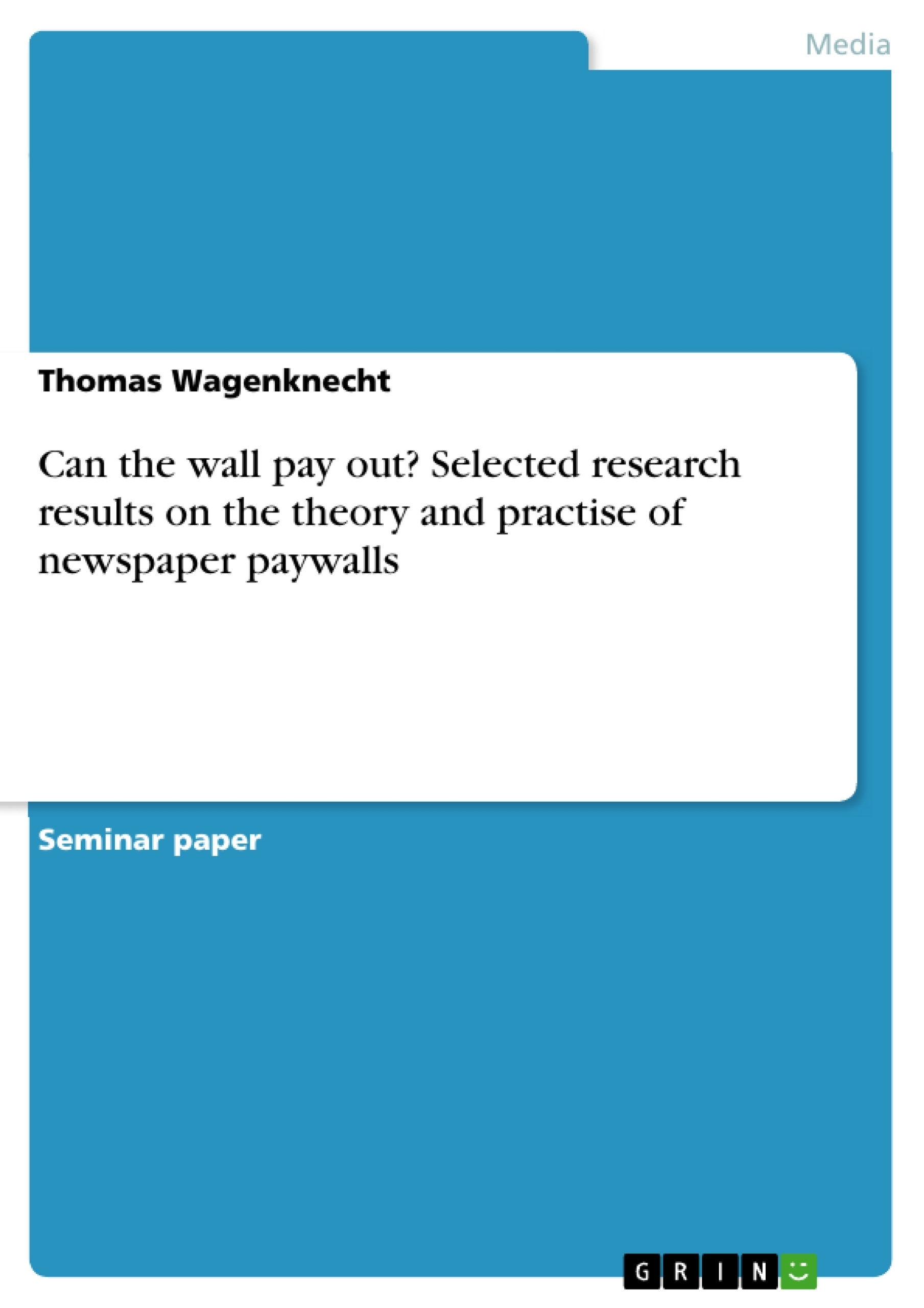For almost 15 years, the so-called digital natives as well as older generations learned that news online is free. One could read a massive amount of content for free on the websites of the same newspaper brands that charge their readers everywhere else. A more or less obvious paradox, mainly financed on the back of a growing advertising market. However, with the burst of the new economy bubble, it became apparent that advertising would transform. The newspaper industry declined to revise its subsidy model albeit acting in a rapidly changing media economy, which forces every player to reconsider its long-term strategy.
First, the study will introduce the current state of the media market in order to see more clearly why new revenue streams are needed. Here, the study will utilize path dependency theory that suggests a strategic lock-in of the industry. Second, the basic economic terms of paywalls are presented by analysing the theoretical background. Third, the groundwork will be reviewed in practice by discussing several of the latest research studies and examples from recent paywall implementations.
Inhaltsverzeichnis (Table of Contents)
- Introduction
- Strategic lock-in in the newspaper industry
- Economics of paywalls
- Paywalls in practise
- References
Zielsetzung und Themenschwerpunkte (Objectives and Key Themes)
This study investigates consumer willingness to pay for online journalistic content, particularly focusing on the implementation of paywalls in online newspapers. It examines the current state of the media market, utilizing path dependence theory to explain the newspaper industry's strategic lock-in. The study then delves into the economic principles behind paywalls and analyzes recent research and examples of paywall implementations.
- Consumer willingness to pay for online journalistic content
- Implementation of paywalls in online newspapers
- Strategic lock-in in the newspaper industry
- Economic principles of paywalls
- Recent research and examples of paywall implementations
Zusammenfassung der Kapitel (Chapter Summaries)
- Introduction: The introduction highlights the shift from free online news to paid content, exploring the implications of paywalls for the future of the newspaper industry. It emphasizes the need for new revenue streams due to the changing media landscape and the limitations of the traditional advertising-supported model.
- Strategic lock-in in the newspaper industry: This chapter examines the evolution of the newspaper industry's dependence on advertising revenue and the challenges posed by the rise of online media. It analyzes the "advertisement-circulation-spiral" and its limitations in the digital era, introducing the concept of strategic lock-in and its implications for the newspaper industry.
- Economics of paywalls: This chapter explores the economic principles of paywalls, focusing on different payment strategies and models, such as "sampling strategy," "paid content strategy," and "free content strategy." It provides a brief overview of historical paywall implementations, particularly highlighting the Wall Street Journal's early adoption in 1996.
Schlüsselwörter (Keywords)
This study focuses on the evolving landscape of the newspaper industry, exploring the challenges and opportunities presented by the shift from free online news to paid content. Key themes include consumer willingness to pay for online journalistic content, the implementation of paywalls in online newspapers, strategic lock-in, path dependence theory, and the economic principles of paywalls.
- Quote paper
- Thomas Wagenknecht (Author), 2014, Can the wall pay out? Selected research results on the theory and practise of newspaper paywalls, Munich, GRIN Verlag, https://www.grin.com/document/272924



